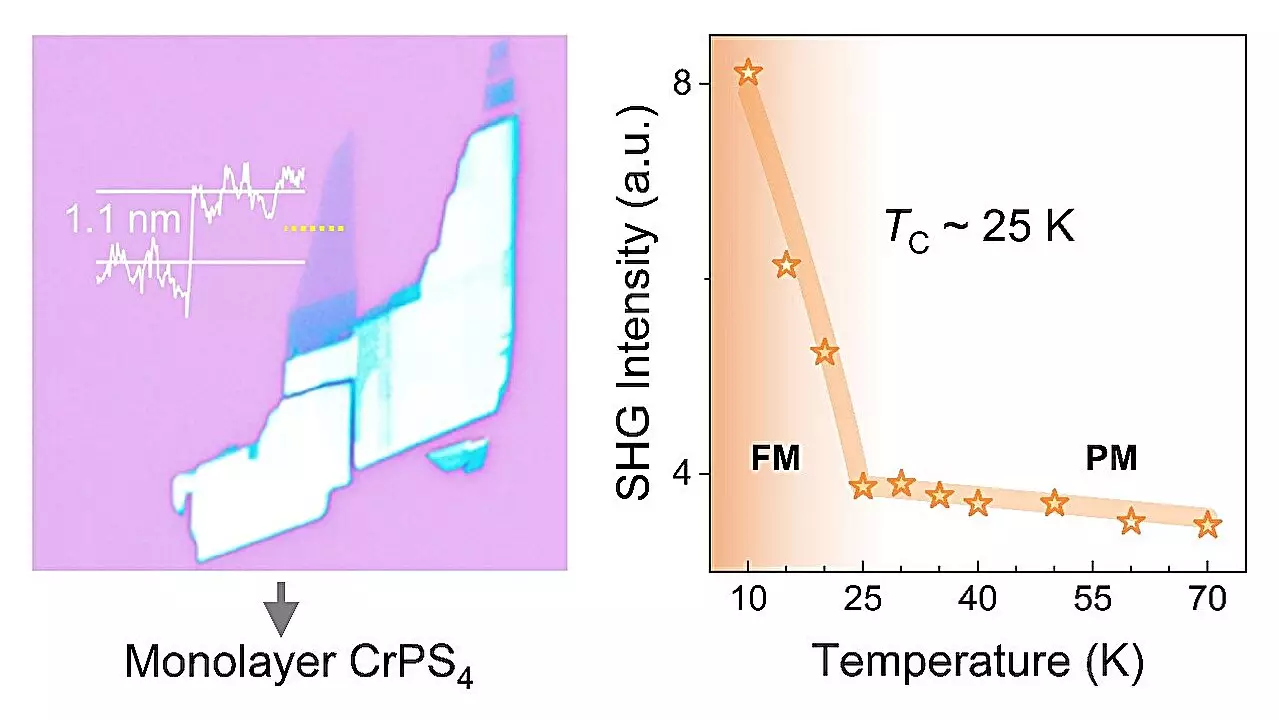Recent advancements in material science have opened exciting avenues for the exploration of nonlinear optical effects, particularly in two-dimensional (2D) magnetic materials. Spearheaded by Professor Sheng Zhigao of the Hefei Institutes of Physical Science, a research team has made a groundbreaking discovery in the realm of nonlinear magnetic second harmonic generation (MSHG). The findings, published in *Advanced Optical Materials*, not only underscore the intricacies of magnetism in 2D materials but also hint at potential future applications in optoelectronics.
Second harmonic generation (SHG) is an intriguing nonlinear optical effect prominently recognized for its sensitivity to symmetry breaking in materials. Traditionally observed in crystals exhibiting broken symmetry properties, this phenomenon finds further interest in magnetic systems, albeit with significantly weaker observation. This limiting factor has thwarted the application of SHG in optical devices, necessitating innovative research into magnetic materials that might harbor unexplored optical phenomena.
CrPS4, a layered antiferromagnetic material, serves as the focal point of this research. By methodically analyzing the relationship between magnetic order and SHG effects, the team uncovered distinct behaviors in monolayer versus bulk CrPS4. The critical observation was that while bulk and even-layered CrPS4 showcased no c type SHG effects associated with antiferromagnetic order, the odd-layered monolayer configuration revealed a significant c type SHG response induced by ferromagnetic order.
This distinction is pivotal because it highlights an essential transformation when transitioning from bulk to monolayer structures, where the material’s symmetry properties shift dramatically, offering greater insights into the underlying physics. The observed ferromagnetic order demonstrates the dual breaking of spatial and time inversion symmetries, facilitating previously unseen optical responses.
Comparison of SHG Types and Implications
One of the most remarkable outcomes of this study is the comparable signal strength of the ferromagnetic order-induced c type SHG to the conventional i type SHG, which stems from broken crystal structural symmetry. This parity of signal intensity underscores the unprecedented nature of this discovery, presenting an intriguing paradox in materials science.
Such findings illuminate the potential of using magnetic 2D materials like CrPS4 in optoelectronic devices. With their unique structural properties and pronounced SHG effects, these materials may redefine various applications, essentially paving the way for innovations in future technologies that leverage optical nonlinearity.
Concluding Thoughts
The pioneering work conducted by Professor Sheng Zhigao’s team marks a significant milestone in understanding the optics of 2D magnetic materials. Their findings not only enhance our comprehension of nonlinear optical phenomena but also propose exciting new strategies for integrating magnetic elements into optoelectronic systems. As research progresses, the implications of these discoveries could result in transformative applications across diverse technological fields. The exploration of CrPS4 sets a precedent for future investigations, encouraging further studies into other magnetic van der Waals materials that could yield similarly remarkable optical properties.

